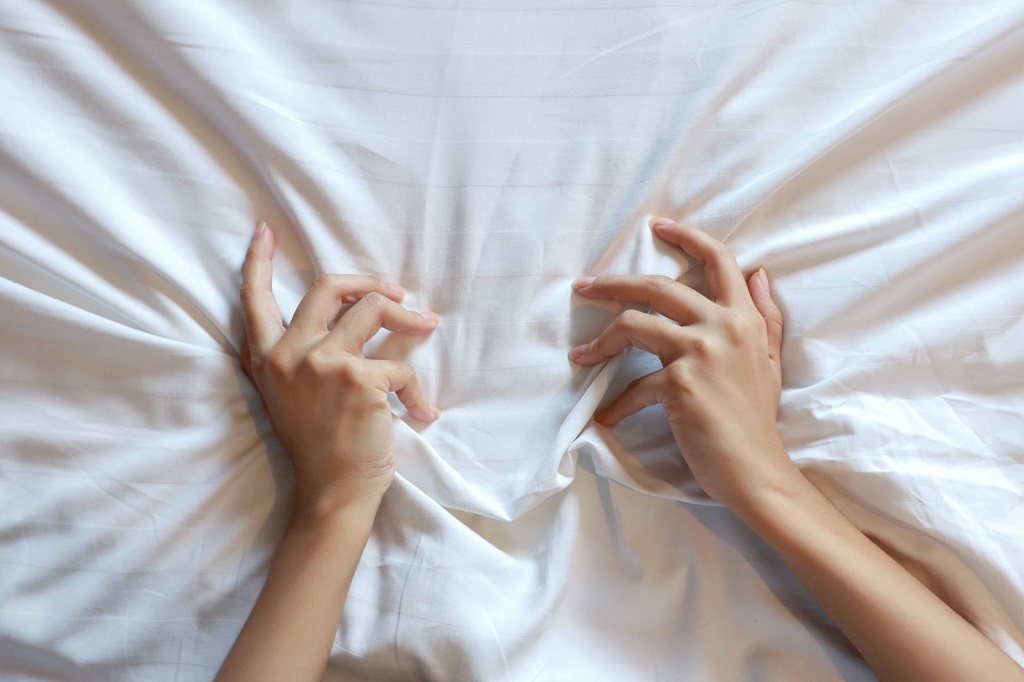Squirting Orgasm – What It Is and How It Happens

Squirting isn’t something that happens the same way for everyone. Some people experience it consistently with orgasms, while others don’t squirt, and that’s OK!
To try squirting, you need to be in the right psycho-emotional state. This means being aroused and comfortable with your vulva. Explore your erogenous zones, and find ways to stimulate your G-spot — it feels like a spongy bump in the front wall of the vagina.
What is an Orgasm?
The top-line answer is that an orgasm is one of your body’s responses to reaching the peak of sexual arousal (or “being turned on”). It’s also intense pleasure and sexual excitement, with fast muscle contractions and increased blood flow. There’s much more to an orgasm; it can involve your entire body.
The journey to orgasm is a personal experience and can feel different for everyone. It’s important to avoid comparing yourself to others and not have preexisting notions about what an orgasm should be like.
For most people, orgasms are triggered by sexual stimulation. But they can also be caused by many other things, such as exercising, kissing, riding in vehicles, eating, listening to certain kinds of music, childbirth, defecating, and even brushing your teeth. A 2018 study found that nonsexual orgasms are becoming more common and are linked to increased feelings of closeness and empathy.
When you reach orgasm, your brain receives signals from all over the body, the clitoral glans and the anterior vaginal wall. This results in a massive release of hormones, including dopamine, norepinephrine and oxytocin—all the neurotransmitters that make you feel good. These hormones increase blood circulation, swell the muscles and cause the anal area to engorge with blood. Guys usually ejaculate fluid from the penis at this point, known as semen.
How Does Squirting Happen?
You probably heard of squirting if you’re a kink queen or vanilla lover. But even if you have, you may be confused about how to squirt, where it comes from, and whether or not it’s real. Despite being the subject of porn and raunchy brunch convos, there’s not a lot of research on squirting (though there is plenty about orgasms).
The most we know about how squirting happens is that it’s associated with high levels of sexual arousal. It can occur due to clitoral or G-spot stimulation, and orgasms often accompany it.
Some researchers believe that squirting results from the Skene’s glands, the female prostate. These glands are present in most people with vulvas but don’t always produce squirting fluid (2). Instead, they release a small amount of clear liquid from the bladder during orgasms and high arousal.
Those who can squirt say they feel the sensation most when climaxing or just before climaxing. They also report that simultaneous clitoral stimulation and penetration can cause them to squirt. Experts suggest experimenting with different techniques to see what feels good for you. But whatever you do, don’t push too hard. Squirting doesn’t feel the same for everyone, and it can be hard on both partners.
What is the Difference Between an Orgasm and a Squirt?
While porn seems to imply that every woman with a vagina or vulva squirts bucketfuls after some stimulation from their dildo, it’s not the case for everyone. And while squirting has become more and more accepted in certain circles (especially in the LGBTQ community) as an orgasmic experience that some women may feel, it’s not as common as the average orgasm.
It’s also important to remember that it’s not something everyone has to do, which is completely OK! “Squirting is not a sexual sign of success or pleasure. It simply expresses what is happening in the body,” says Licensed Professional Counselor Moushumi Ghose. “It’s really about feeling the sensations happening inside and outside the body.”
Getting into the right mindset is helpful if you want to try squirting. “Women need to be able to relax into the moment and let their bodies do what they do best,” says Ghose. “This means being relaxed, completely present in their body, and not thinking about anything else.”
While there isn’t a lot of research on the topic, it’s thought that when women squirt, it’s essentially urine mixed with female ejaculate. However, it’s important to note that not all squirts contain urine, and most say the liquid feels different from peeing.
How Can I Get Started with Squirting?
Seeing squirting in porn has made many people think of it as a pinnacle of orgasms and the thing to strive for. But, like any sexual experience, it will not be the same for everyone. Some orgasms might even be better without squirting involved.
While you can’t force someone to squirt, you can help encourage it by being present and discussing your experiences non-judgmentally. Squirting can be a sexy and bonding moment, especially when couples do it together. But don’t make squirting into a mission; give your partner the necessary space.
The key to learning how to squirt is understanding the mechanics of it and knowing that it’s not the same as peeing. You need to relax a certain set of muscles in the pelvic floor and push up on the G-spot to propel the liquid. The resulting mess is another fun part, so don’t be afraid to get messy!
You can also try a female arousal gel to see if it helps stimulate your clitoris. But remember that not everyone will squirt an orgasm, so don’t stress if you don’t. Every orgasm is different, and it’s important to enjoy them all, whether they include a squirt or not.
